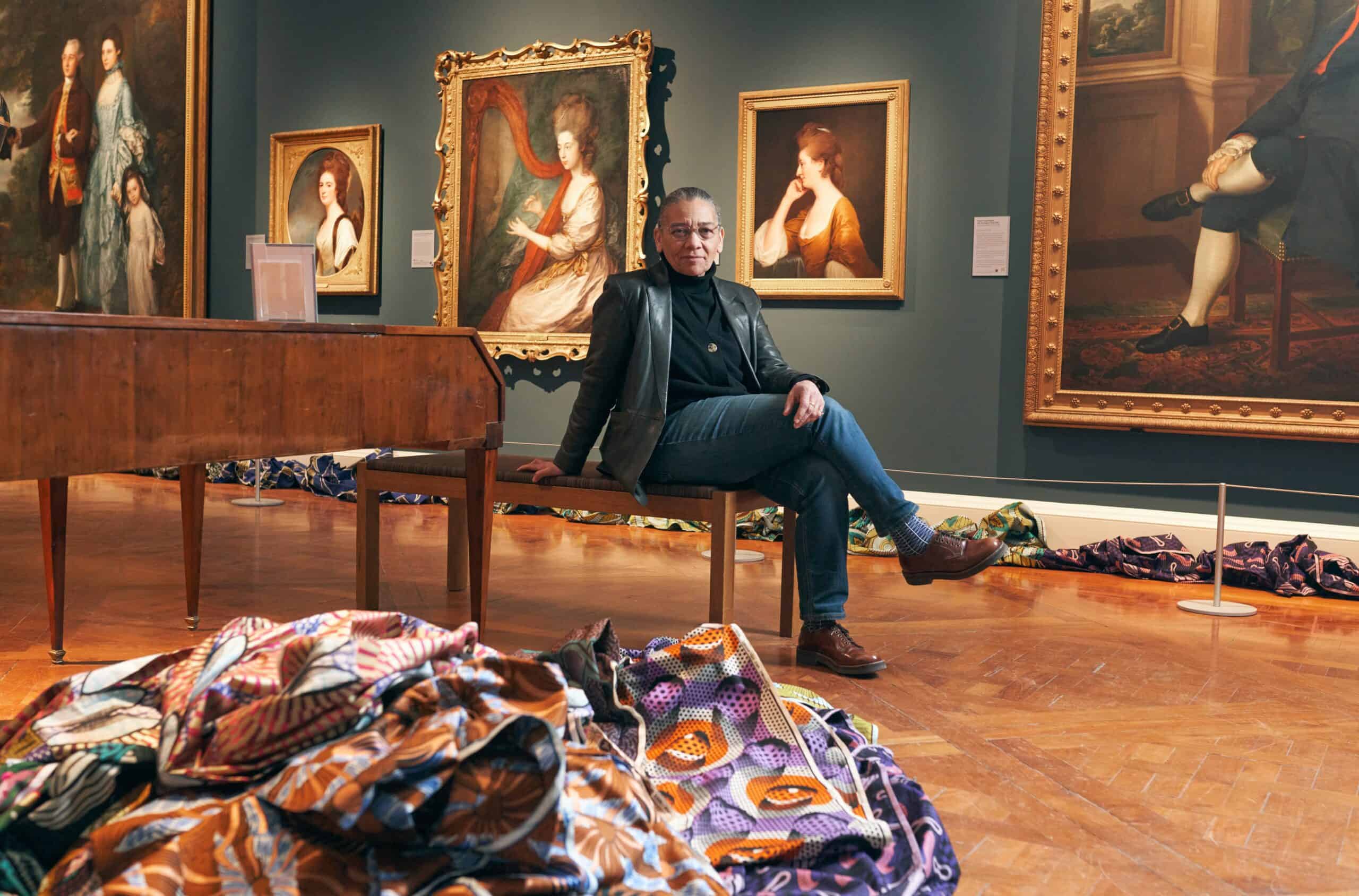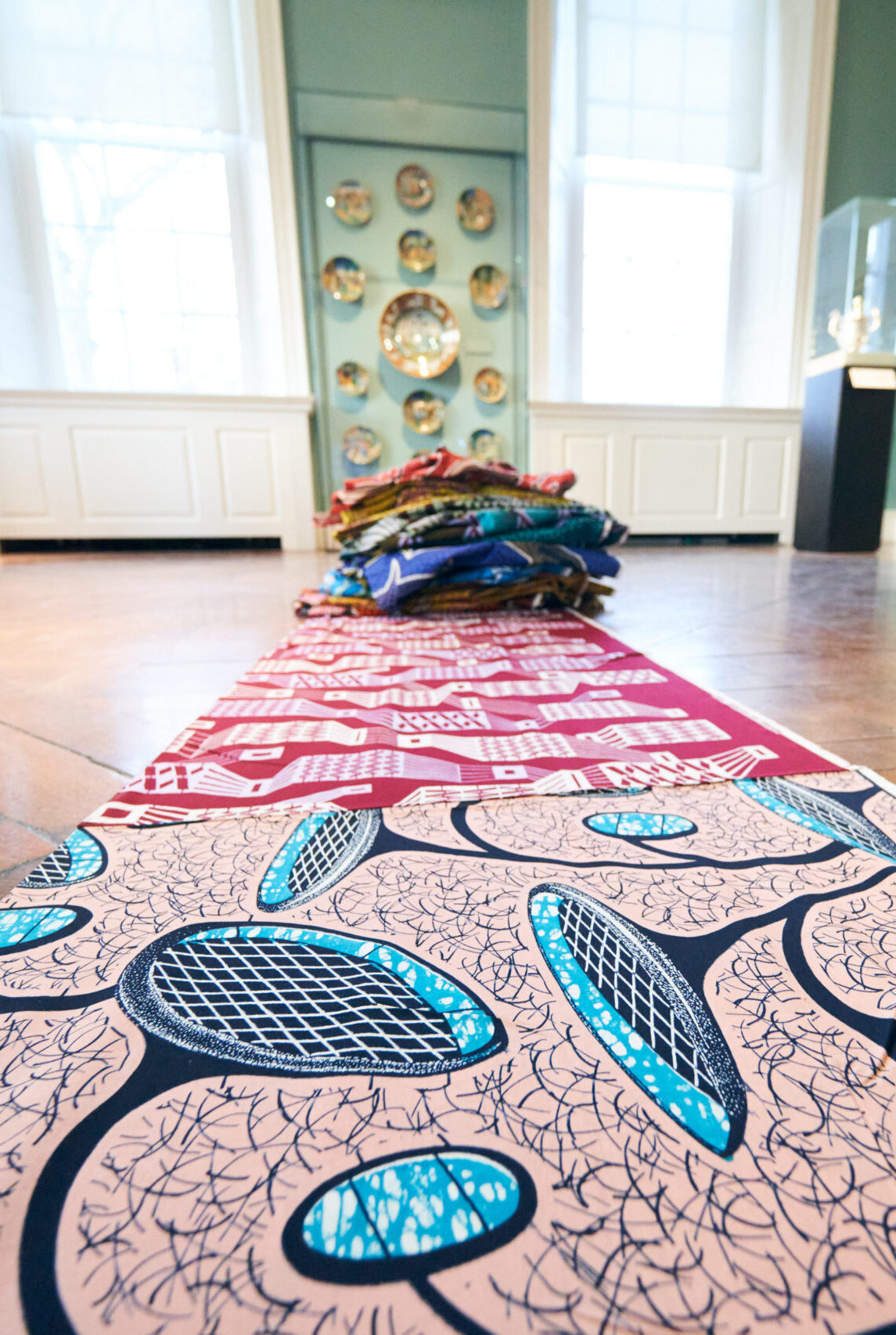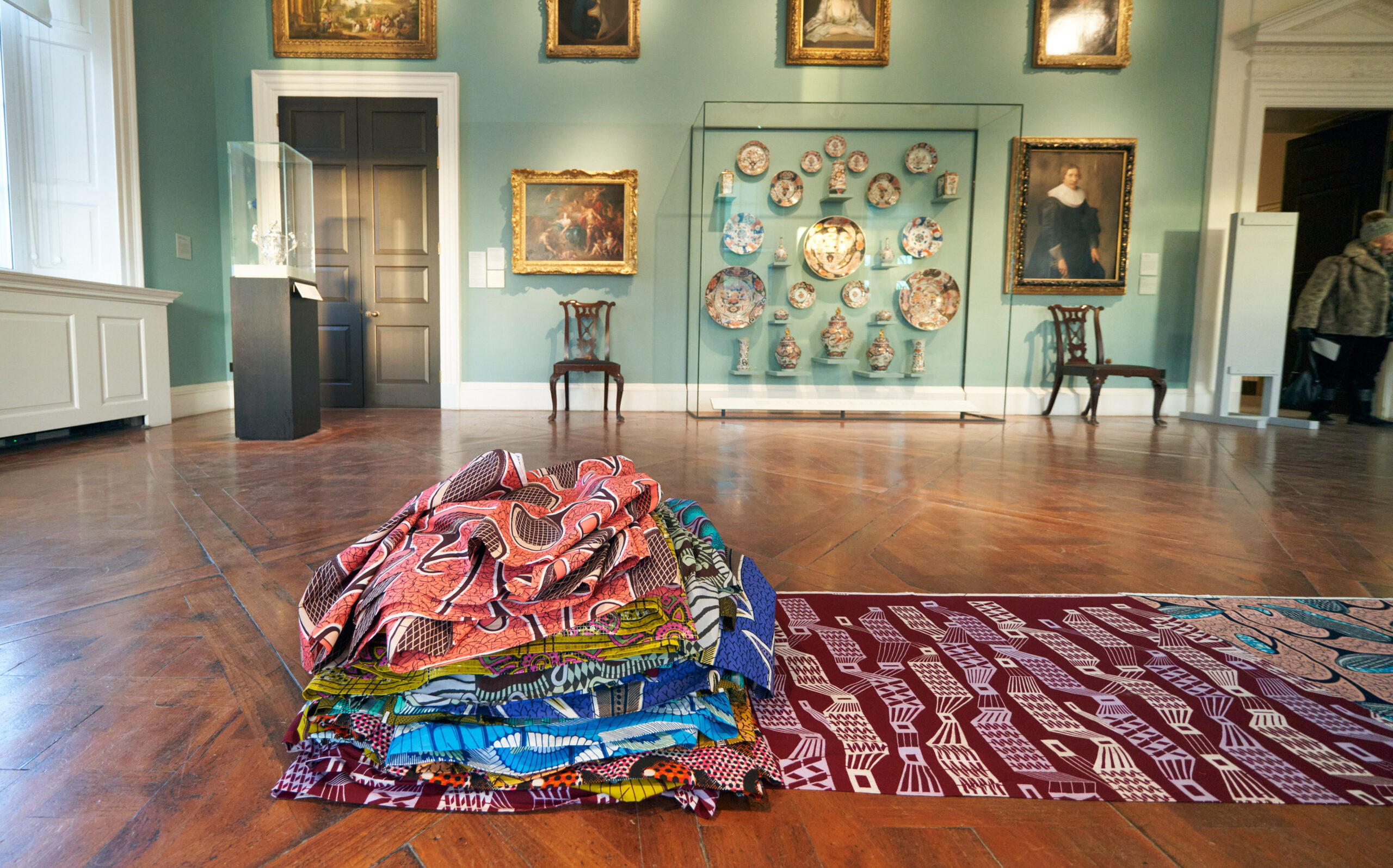An interview with Lubaina Himid
As she finished installing Lost Threads, Lubaina gave an interview sharing her processes and influences behind the work. We’re pleased to share the transcript below.
Could you share some of your influences or experiences that sparked your interest in art?
Well, my mother was a textile designer. So she was talking about colour, about the pattern about people’s clothes, about curtains and carpets all the time. And we’d spend every other weekend, wandering around the department stores of London, and on weekends when we weren’t in department stores, in world renowned museums. So in one place, you have beautiful things that you can touch and try on. And in other places, it’s the same process of that around relating through beautifully lit spaces. You look at beautiful things. And you can’t touch them, but you do sort of own them – well the nation owns them.
 And has your background shaped your artistic practice?
And has your background shaped your artistic practice?
I suppose because my mother was an artist, she didn’t mind that I was an artist. She wanted me to have a proper job, but I did have a proper job as an artist and teaching, most of my life I was making work. So in some senses, I had that experience really early on, of family members, who were musicians and artists, who said it was okay to do that. My father, although he was a teacher in Zanzibar, and died when I was very young, was also a drummer.
Your artistic career spans four decades, how would you say it has evolved?
I suppose it is probably true that in the beginning, say early 80s, when I really started to exhibit, I had been making work since my early teens, but when I started to exhibit, I was bolder, you know, I was ruder, I was more kind of making with whatever I could find as I didn’t have any money. And I wasn’t thinking about museums or collections, or people buying it, the point was to show it, and show it along with other black artists. And so over the years, I’ve become more interested in painting, making installations about subtle moments in between one of those kind of moments that everyone can share, and the moment in between questions.
Do you have a preference over installation work or paintings?
I kind of have to do installation work and paintings at the same time. I quite often work on two shows at once, because something suddenly becomes difficult with one body of work. And so I work on another one. So it wasn’t really a preference, but I feel the need to do both.

Can you describe the creative process behind the development of ‘Lost Threads’?
Well, the process is a little bit like everyday life for this particular piece. Because I bought all the fabric from the fabric shops all along commercial street, quite near Liverpool Street in London and near Whitechapel Art Gallery. And I just went in and out of these shops, in and out, in and out. And accumulated an enormous 400 metres of cotton which they then sent, wrapped beautifully and carefully sent to my studio all crisp and lovely. And I got all the folds of fabric out to make decisions about how to make four 100 metres, because the whole thing was originally shown in a barn as part of the British textile Biennale in 2021.
So I get these folds of fabric in my studio, and put them next to each other to kind of get which one works against which. In a sense I was painting with the cloth, but they were all folded and wrapped in packages. Then when I had decided, my studio manager has a wonderful mother. His mother sewed each design together, it took her about 70 or 80 hours. And each piece is like perhaps a sort of French pleat to make it extra strong, so we could tie the cloth around the pillars without ripping or tearing. And then we took these four huge 100 metre folds to the barn and hung them there. And then here, at the Holburne, we had worked for months and months trying to work out the best way for it to look as if it belonged in the museum. But also seem different. There’s this kind of play between something that is part of the fabric, the fabric is part of the fabric of the building, but doesn’t quite fit.
Can you expand on how this specific location sort of enhances the work…it’s significance or audience engagement with this particular work?
The museum is full of fabulous paintings, ceramics, silverware, the building itself as well is elegant, an elegance which could only have the wealth because of trading advantages during the slave trade, and the selling of people. And so what I’m trying to do with this piece is say, come to this museum, if it’s your favourite place, come again. And just see the people in the portraits of wealth and elegance, and think about how, how this happened – the wealth and privilege isn’t an accident, someone, something has to suffer really. So the pieces of cloth in this installation are talking about trade. It’s talking about the continental exchange of people and money and goods. For me, it’s just getting people to think – you can’t have this privilege without people suffering.
With the placement of the fabric, what was going through your mind when installing it?
I suppose I still want people to recognise their museum. And for people who have never been, for them to still be interested in what’s here, what it stands for and what it holds. Whilst also having this kind of uneasy feeling that something that wasn’t being said, was a history that isn’t being talked about. The people being spoken about are in the aristocracy and privileged classes – nobody really talks about either the servants who kept these places going, in this case, or because the Holburne was previously a hotel, the staff the staff that kept it in operation. Everyone wants to talk about these great men and women, their clothes and luxuries. So I want this work to be seen as something that is in the atmosphere, kind of ghostly traces of people and situations that are very obviously here, but not present. So to imagine what isn’t here, what stories aren’t being told.

With thanks to Jigsaw for supporting the exhibition and film content of Lubaina Himid: Lost Threads

Photos Gareth Iwan Jones
